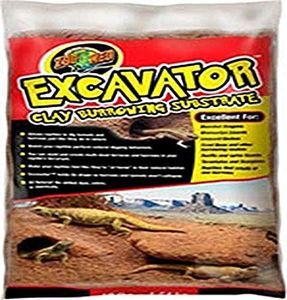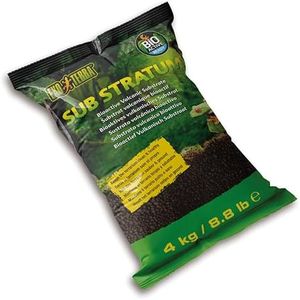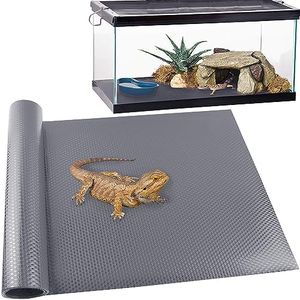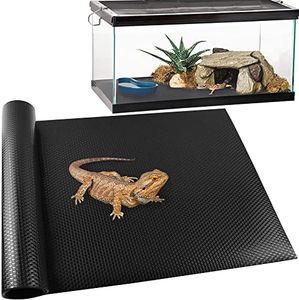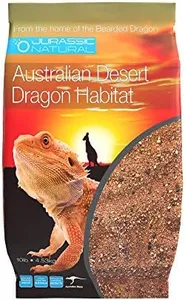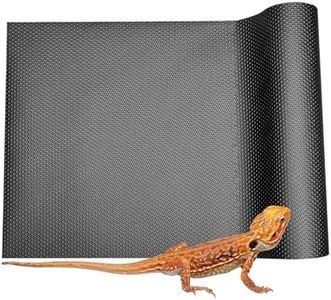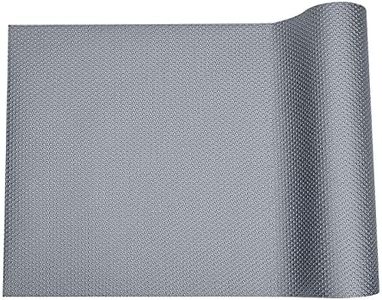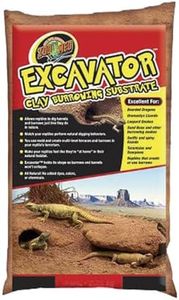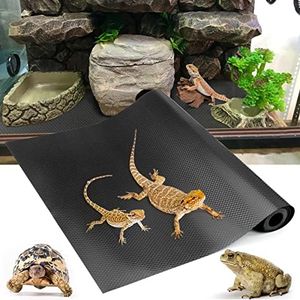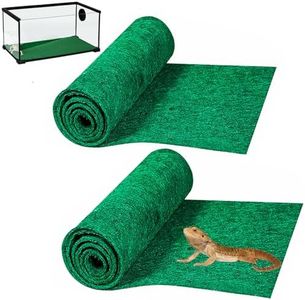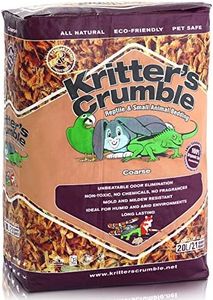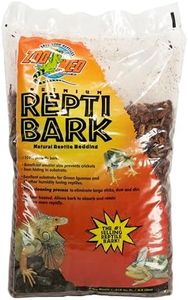We Use CookiesWe use cookies to enhance the security, performance,
functionality and for analytical and promotional activities. By continuing to browse this site you
are agreeing to our privacy policy
10 Best Bearded Dragon Substrate
From leading brands and best sellers available on the web.By clicking on a link to a third party's website, log data is shared with that third party.
Buying Guide for the Best Bearded Dragon Substrate
Choosing the right substrate for your bearded dragon is an important part of creating a comfortable and healthy environment for your pet. The substrate is the material that lines the bottom of their enclosure, and it can affect their comfort, hygiene, and safety. To make a good choice, you need to consider factors like how easy the substrate is to clean, how safe it is if your dragon accidentally eats it, how it affects humidity, and how natural it feels for your pet. Think about your dragon’s age, health, and habits, as well as how much maintenance you want to do. The best substrate offers a balance between safety, convenience, and helping your dragon feel at home.Safety (Digestibility and Impaction Risk)This refers to how safe the substrate is if your bearded dragon accidentally eats some of it, which can happen during feeding or exploring. Some substrates, especially loose ones like sand or gravel, can cause digestive blockages (impaction) if swallowed. Safe substrates are those that are low-risk for impaction, such as paper towels or tiles. Young or clumsy dragons are more likely to ingest substrate, so beginners or those with juveniles should look for the safest options, like solid or easily removable substrates. For older dragons or experienced keepers, certain loose substrates may be safely used under close supervision.
Ease of CleaningEase of cleaning is about how simple it is to remove waste and keep the habitat hygienic. Some substrates, like paper towels or reptile carpet, make it quick and easy to spot clean and replace. Others, like loose substrates or soil blends, may require more effort to sift or replace regularly. If you want a low-maintenance option, stick to substrates that can be swapped or cleaned rapidly. If you enjoy naturalistic setups and don’t mind a more involved cleaning process, you might consider loose substrates, compost mixes, or bioactive layers.
Humidity ControlThis spec involves how much the substrate affects the moisture level in the enclosure. Some materials, like soil or coconut fiber, hold moisture and can increase humidity, while others, like sand or tile, tend to stay dry. Bearded dragons are desert animals that do best in dry environments, so substrates that’t hold too much moisture are usually better. For most dragons, especially those kept in typical room climates, substrates that do not add excess humidity are ideal. If you live in a dry area or your enclosure tends to be very arid, you might use a slightly moisture-retentive layer, but always monitor humidity levels.
Comfort and Natural FeelThis refers to how comfortable and natural the substrate feels for your bearded dragon. Some keepers prefer solid surfaces for easy cleaning, while others like to mimic the dragon’s natural habitat with loose, earthy substrates or a mix. Comfort can also influence your dragon’s behavior, such as digging or basking. If you want your dragon to express more natural behaviors or enjoy digging, you can opt for loose substrates, provided they are safe. For a simple, hygienic setup, solid substrates work well and are preferred in veterinary or beginner setups.
Cost and ReusabilityCost and reusability refer to how often you need to replace the substrate and how long it lasts. Some substrates, like paper towels, are inexpensive but need frequent replacement, while others, like ceramic tiles, are more costly at first but last a long time. Reusable substrates reduce waste and effort over time. If you prefer not having to shop for substrate regularly, choose something durable and washable. If you don’t mind routine changes or want something disposable for hygiene, opt for single-use options.

